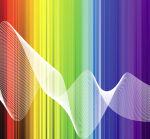 The FCC enacted changes to Part 15 rules for the 60 GHz band (57 – 64 GHz) that will give a boost to different types of data backhaul applications. In a very significant move, the FCC increased the allowed transmitted power for 60 GHz systems deployed in point-to-point configuration outdoors. This will improve the competitiveness of V-band millimeter wave products and set to positively impact companies with solutions in this band such as NEC, Huawei, Bridgewave, Siklu, and Sub10 among many others.
The FCC enacted changes to Part 15 rules for the 60 GHz band (57 – 64 GHz) that will give a boost to different types of data backhaul applications. In a very significant move, the FCC increased the allowed transmitted power for 60 GHz systems deployed in point-to-point configuration outdoors. This will improve the competitiveness of V-band millimeter wave products and set to positively impact companies with solutions in this band such as NEC, Huawei, Bridgewave, Siklu, and Sub10 among many others.
The new rule drastically increase the permitted output power from 40 dBm average EiRP and 43 dBm peak EiRP to 82 dBm and 85 dBm, respectively, for systems with antenna gain equal to or greater than 51 dBi. The emission limit is reduced by 2 dB for every dB that the antenna gain is below 51 dBi. Hence, for systems focused on range with high gain antenna, the increase by 42 dB in output power will result in significant increase in range. If we remember that the absorption of electromagnetic energy in the 60 GHz band by oxygen and water vapor is about 20 dB/km, the rule changes will increase the range by 2 km. Even for systems that use smaller antennas with lower gain, such as 40 dBi which is common, the change in rules provides 20 dBm of additional power boost which doubles the distance from about 1 to 2 km. In short, the FCC rules work to effectively double the link distance.
The rules changes will increase the attractiveness of 60 GHz systems. They can work to improve the reliability of the link where distance is not a gating item, such as the case of small cell backhaul. Looking at the specs of a few such solutions, they sport antenna gains in the 30+ dBi range (Siklu E600: 32 dBi; VubIQ Haulpass 35 dBi; Sub10 Liberator V320/1000: 38 dBi). The expected gain in output power this case is between 4 and 16 dB which can be used to improve reliability, range, or a combination of both.
The FCC also enacted another rule change that eliminates transmitter ID requirements from all 60 GHz system. This rule was in place to enable identification of interference from a system placed indoors and whose emission is directed outdoors.
The moves to clean up the rules pertaining to 60 GHz, such as the decision to adopt EiRP as the measure of emission limit instead of power density at a specified distance to avoid complexities of defining near-far field boundary bodes well for expanding the adoption of 60 GHz systems in different applications. Couple this with maturing 60 GHz standards such as 802.11ad and WirelessHD, and we are set for increased reliance on this band for all types of enterprise and personal applications
